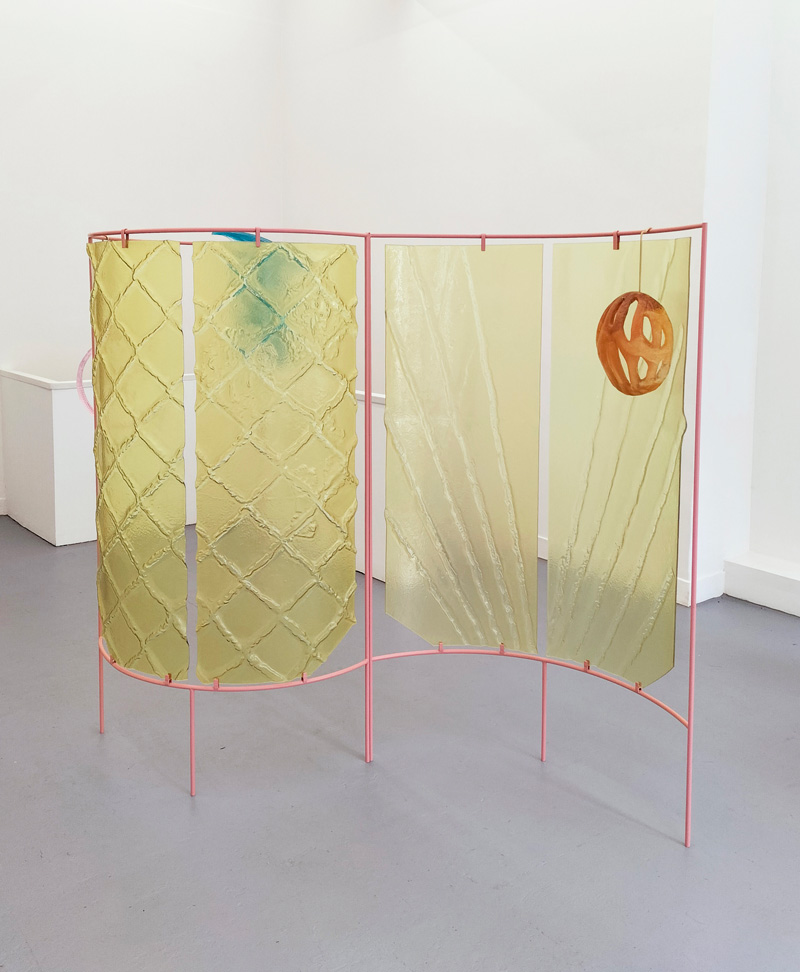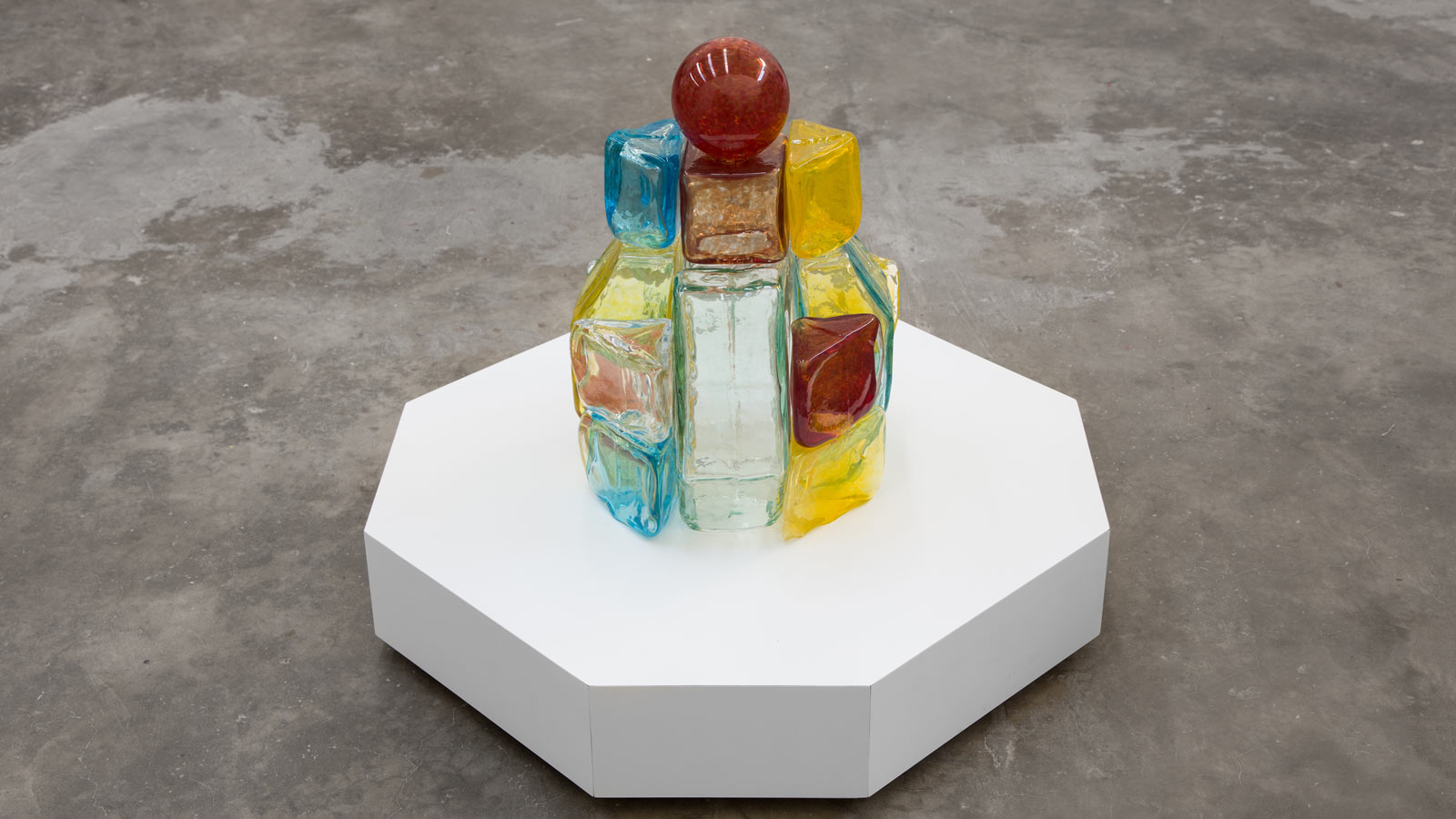Three sculptures by Belén Uriel
Belén Uriel (1974) was born in Madrid, where she graduated from the Faculty of Fine Arts at the Universidad Complutense. She later studied a master’s at Chelsea College of Arts and Design in London, where she lived between 2003 and 2008, after which she moved to Lisbon where she currently lives and works.
Evoking a modernist legacy, Belén Uriel’s artistic practice reflects on everyday consumer items (furniture, clothes, accessories, utensils) in their relationship to the body and to inhabited spaces, and the way these objects affect our social habits. This relationship and negotiation between body, object, design and architecture leads the artist to work with and to question museum and exhibition spaces themselves, as well as reflecting on display practices and playing with ways of exhibiting her work.
Focusing on the sculptural qualities of materials such as paper, metal or, more recently, glass, with which she has worked consistently over recent years, her work seeks to study the relationships between the human body and the objects she creates, primarily designed to protect, secure, envelop and empower the body.


The artist recently embarked on a collaboration with the NOVA School of Science and Technology, which has allowed her to develop her technique with glass, leading to new sculpture series, of which the three works acquired for the CAM Collection are part: the screens Quão I (How I) and Quão II (How II), both created in 2022, and the small sculpture The Fairy Place, dated 2018.
One of the artist’s first glass sculptures, The Fairy Place is inspired by Glasbauspiel, a glass block building game created by the German architect, urban designer and essayist Bruno Taut, whose projects contained a significant visionary and utopian component. This work combines pedagogy, industrial design and architecture, and alludes to the Glass Pavilion designed by the architect in 1914.
The acquisition of these works marks the artist’s accession to the Collection and strengthens its sculpture section, which is relatively small compared to painting and drawing. Created by a Spanish artist living in Portugal, this addition also reflects the national art scene, which in recent years has seen a growing number of foreign artists, facilitating dialogue with Portuguese artists.

